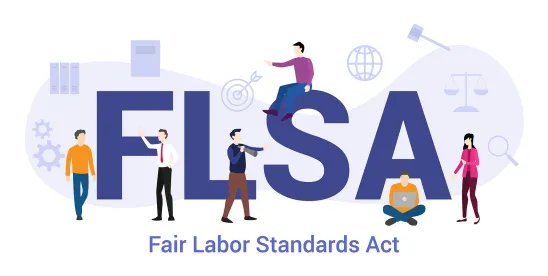On June 27, 2025, the U.S. Department of Labor (“DOL”) announced a significant shift in its wage and hour enforcement policy, ending the longstanding practice of seeking liquidated damages in administrative, prelitigation proceedings under the Fair Labor Standards Act (“FLSA”). This move, outlined in Field Assistance Bulletin (FAB) No. 2025-3, represents a marked change in regulatory approach and has immediate implications for employers, employees, and the broader employment law community. The change is intended to bring the DOL’s enforcement activities back in line with its statutory authority while streamlining the resolution of wage and hour investigations.
What Are Liquidated Damages?
In the context of the FLSA, liquidated damages refer to an additional sum of money, equal to the amount of unpaid wages or overtime compensation owed to an employee, awarded as compensation for delayed payment. Liquidated damages are distinct from punitive damages and serve to ensure prompt and full wage payment to employees.
Ostensibly, the purpose of liquidated damages is to compensate workers for losses that arise from the employer’s failure to pay the required wages on time, and not merely to penalize employers. If an employer was found to have violated minimum wage or overtime requirements, the law provides that the affected employee is entitled to recover both the unpaid wages and an equal amount in liquidated damages, unless the employer can demonstrate that the violation was made in good faith and with reasonable grounds for believing it was not a violation of the law.
DOL’s Pursuit and Expansion of Liquidated Damages
Traditionally, the DOL’s Wage and Hour Division (“WHD”) played a limited role in supervising the payment of back wages and overtime compensation through administrative investigations and settlements. For decades, the DOL did not seek liquidated damages as part of administrative settlements in prelitigation cases. Instead, the statute was understood to allow the recovery of unpaid wages and overtime only, reserving liquidated damages as a remedy exclusively available in litigation.
This policy shifted in 2010 under the Obama administration, when the DOL started to pursue liquidated damages in the course of resolving wage and hour investigations before litigation commenced. The agency’s rationale was to enhance deterrence and strengthen worker protections by requiring employers to pay not only the wages owed but also an equal amount in liquidated damages, even in voluntary settlements. This practice expanded further in subsequent years, allowing DOL investigators and regional solicitors to request such damages more routinely when employers settled FLSA violations during administrative investigations. The scope of this expansion was particularly evident under the Biden administration, which formally authorized this authority through FAB 2021-2.
The consequences for employers were significant. Facing potential double damages before a lawsuit could be filed, many employers found themselves in a weakened negotiating position and faced larger financial exposure. Proponents of the policy argued that it helped deter wage and hour violations, but critics contended that it prolonged investigations and introduced unnecessary ambiguity and delay into the administrative settlement process. Research cited by the DOL in FAB 2020-2 (which was removed by the DOL on April 9, 2021) showed that the inclusion of liquidated damages extended the length of administrative investigations by nearly 28 percent.
The New Administration and Its Statutory Interpretation
Under the second Trump Administration, the new leadership of DOL, upon reviewing the FLSA and related legal authorities, concluded that Congress had not expressly granted the DOL the authority to supervise or secure payment of liquidated damages in prelitigation or administrative processes.
In FAB 2025-3, the DOL formally rescinded FAB 2021-2, and expressly prohibited the WHD from seeking, imposing, or collecting liquidated damages in the settlement of wage and hour disputes before litigation commenced. Effective June 27, 2025, the DOL will only supervise or require the payment of unpaid wages or overtime compensation during administrative investigations and settlements. DOL staff and legal counsel are now prohibited from seeking, negotiating for, or approving the inclusion of liquidated damages in any administrative (pre-litigation) settlement. The only exception to this rule is for matters where parties had already agreed in writing to include liquidated damages as part of the settlement prior to this date.
Section 216(c) of the FLSA is central to this analysis. It authorizes the DOL to supervise the payment of unpaid minimum wages or unpaid overtime compensation. The statute does not mention liquidated damages in the context of administrative settlements, and further, Section 260 of the FLSA reserves the determination of good faith and the corresponding award or denial of liquidated damages to the courts. Therefore, the DOL’s new leadership has interpreted their authority as limited to overseeing the recovery of unpaid wages and overtime only.
This interpretation is a stark departure from the previous administration’s emphasis on “maximum enforcement,” which often meant higher settlement demands and broader interpretations of the DOL’s remedial powers. The DOL explained that this realignment would foster more effective dispute resolution, ensure swifter outcomes for workers seeking back wages, and provide clearer guidance and predictability for employers facing investigations.
This new policy, however, is not retroactive and will only apply to matters or agreements made after June 27, 2025.
Pursuing Liquidated Damages: When and How It May Still Happen
Under the revised policy, liquidated damages are not categorically eliminated as a remedy, but the DOL may only pursue them in court proceedings. Specifically, liquidated damages are still available when the DOL files a lawsuit in federal court under the FLSA to recover unpaid wages or overtime. Employees can also seek liquidated damages by bringing their own claims in court, either individually or as part of a collective action.
Notably, the DOL retains the authority to impose civil monetary penalties for willful or repeated FLSA violations during administrative proceedings. While these penalties are separate from liquidated damages and can be significant, they are a distinct penalty and are not affected by the new policy regarding liquidated damages.
How This Change May Effect Employers
While the new policy is in its infancy, the policy shift may have the following effects for employers facing DOL wage and hour investigations:
- Reduced Financial Exposure: Employers facing DOL investigations now face liability for unpaid wages and overtime only and not an automatic doubling of damages through liquidated damages at the administrative stage. This can substantially reduce the cost of resolving disputes before litigation.
- Encouragement of Early Settlement: With the elimination of automatic demands for liquidated damages in administrative resolutions, employers now have a clearer path to voluntarily resolve potential FLSA violations and correct payroll errors without the additional burden of double damages.
- Streamlined Resolution: Data from the DOL indicates that administrative investigations were extended by nearly 28 percent when liquidated damages were in play, delaying resolution and prolonging uncertainty. The new policy could help expedite both investigations and settlements.
Although the new policy may offer a reprieve for employers, it is still important to respond promptly to DOL investigations. Employers should also review their wage and hour practices to ensure compliance with applicable law.



 />i
/>i
